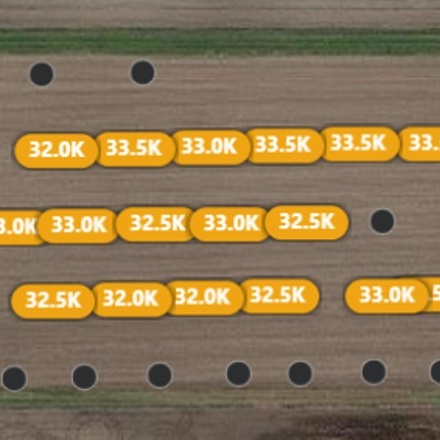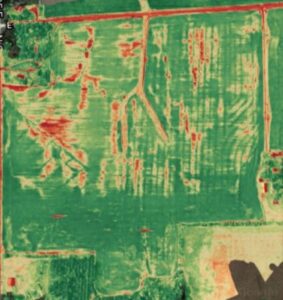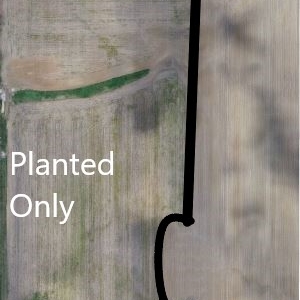Interaction of land features with developing crops
Flown by Bob Bruner, Agriculture & Natural Resources Educator, Purdue Extension – Clay/Owen County
Detecting unique land features
Drones are not only effective at recording plant health, but also at detecting how land features interact with developing crops. In a Greene County field, drone flights revealed unique land features that had a direct impact on plant health. Differences in the landscape could be due to a creek or washout over time.

Topography and elevation
Elevation mapping demonstrates clear ridges and drops in height as you move towards the southwest corner of the field. A steady drop in elevation can be seen in a north-to-south trajectory, moving toward a running water source to the south. Ridges in the southern area may be evidence of the land shifting over time due to washouts.
![]()
Plant health analysis
Plant Health Analysis shows how the different topographical features are impacting the developing crop. As the topography varies, the developing corn struggled, most likely due to a difference in water availability. Crop development appears to correlate closely to the topography shown in the elevation map.

What does this mean for growers?
Farmers can use this information to plan for problem areas more effectively. Mapping and analytics can help a grower plan for changes to fields, such as tile installation, indicating that drones not only serve a purpose during the season during plant growth but also before planting by looking at land features and topography.















